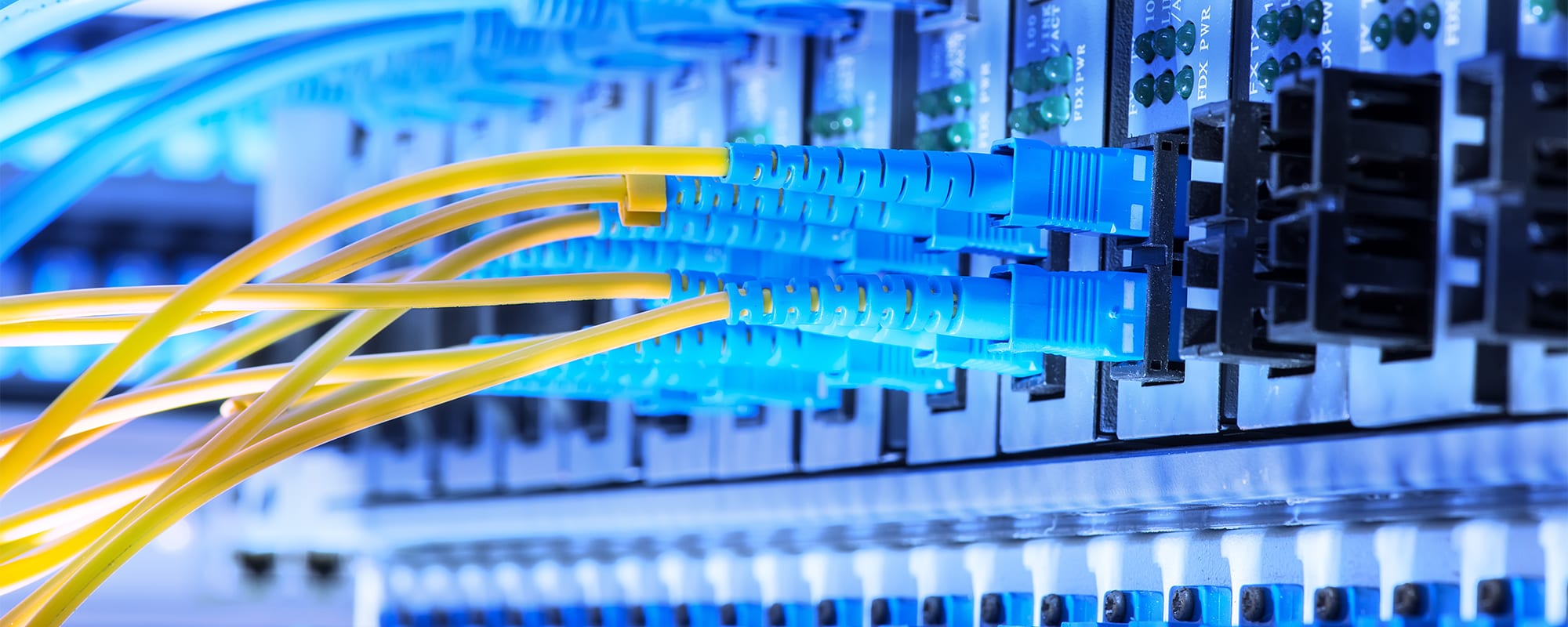There’s a wide variety of both unmanaged and managed Ethernet switches available on the market. Learn about the advantages and disadvantages of each to identify which Ethernet switch is best for your network.

One of the most critical elements of a sound Ethernet network is the network switch. In essence, a network switch, or Ethernet switch, enables connected devices to share information with each other. Without these devices, the computers and systems that comprise the network would be unable to communicate. As such, Ethernet switches are core building blocks for any given network, regardless of its size or complexity.
Due to the critical nature of Ethernet switches, a wide variety of both unmanaged and managed Ethernet switches are readily available. RS alone supplies nearly 2,000 Ethernet switches from more than 30 different suppliers. This extensive variety means that most customers are all but sure to be able to satisfy the needs of their network with an off-the-shelf solution, but it can also make choosing the best Ethernet switch for a given set of network configurations a real challenge. Although there are several subcategories of and configuration options for unmanaged and managed Ethernet switches, establishing a general understanding of how these switches differ — and the advantages and disadvantages of each — can make purchasing decisions much simpler.
In this Ask the Expert article, RS Product Portfolio Manager Gary Guess introduces, compares and contrasts the two most basic types of Ethernet switches: unmanaged switches and managed switches, shares key considerations for selecting Ethernet switches sure to satisfy the needs of your unique network and addresses the unique value that RS provides for customers in need of network switches. Guess has more than 21 years of experience in the IT industry and specializes in providing comprehensive network solutions tailored to the individual needs of thousands of RS customers.
Key Differences Between Unmanaged and Managed Switches
There was a time in the not-too-distant past when unmanaged switches were the only option available for Ethernet networks. In the simplest terms, an unmanaged switch receives a message from a target source and then forwards that message to its intended destination as efficiently as possible. They don’t allow for any user input beyond the initial installation and setup, and additional characteristics such as security features are rare and, if available, are basic at best.
Differences in unmanaged switches generally come down to the size and number of ports. The most common configurations are five-port, eight-port and 16-port, but some switches can have as many as 48 ports. “Unmanaged switches are entry-level switches,” said Guess. “Regardless of their configuration, they are plug-and-play devices. Their IP protocols are already set up, so once you plug them in, they do what they’re supposed to do.”

As technology evolved and Ethernet networks became more complex, customers demanded more from their network devices. “The trigger that gave rise to improved Ethernet switch technology is data,” said Guess. “Data is king. The demand for data collection has increased astronomically. In a very short time, we’ve gone from 10 MB transfers to 100 MB, 1 GB, and 10 GB — and for the foreseeable future, we’re going to be dealing with transfers up to 1.6 TB. To transfer these vast amounts of data effectively, network switches need to keep up.”
However, the ability to utilize transmitted data is just as important as the amount of data that can be transmitted. “As we move into Industry 4.0 and a technology environment based on 5G networks, more emphasis is being placed on IoT, or the Internet of Things,” said Guess. “What we’re seeing with IoT is a point where traditional IT and the operational side of technology are converging into one. Facing this reality, the challenge is how can we take what we know of the former and transfer it to the latter so it can be used on the floor of, say, a manufacturing environment. When you hit a mesh point where these two fully merge, you officially become a modern organization. Advancements in network switches have been and continue to be instrumental in this transition.”
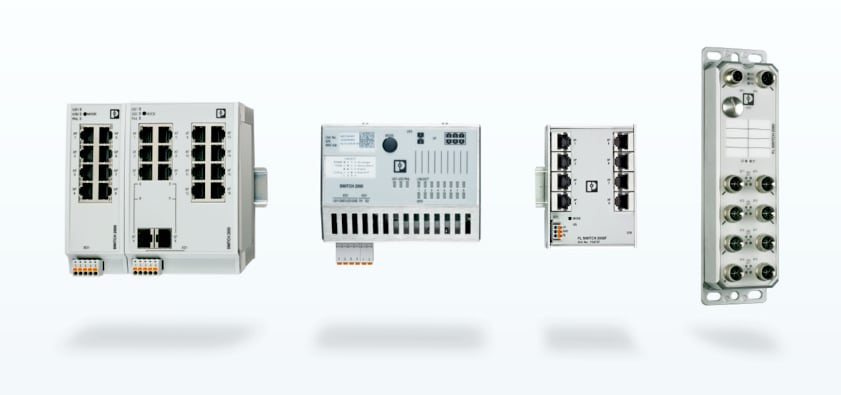
Designed to support these industry-wide advancements, managed Ethernet switches transmit data as well as enable network administrators to leverage that data. While the specific technologies within different types of managed switches vary, these switches are generally defined by their control, monitoring and management capabilities and their ability to prioritize the LAN traffic that flows through them. “When you start looking at managed switches, you’re typically looking at a device that offers administrators the ability to set up their own protocols within it using built-in software. Such protocols can be security measures, or they can be simply reactive measures that trigger based on the data transferred or other variables or situations,” said Guess.
The administrative applications enabled by custom protocols are vast but, in practice, generally depend on the administrator and the needs of the network. Managed Ethernet switch protocols can support troubleshooting, onboard diagnostics (OBD) monitoring, logical network configurations and network optimization.
“When adding a managed switch, you are really taking the next step in network maturity,” said Guess. “At this stage, you really get to ask the question, ‘What do you want from your network?’ Answering that question, and then letting the answer guide your network configuration, represents a whole new level of sophistication beyond what an unmanaged switch provides.”
Advantages and Disadvantages
While this makes it sound like managed switches have rendered unmanaged switches all but obsolete, this is hardly the case. Indeed, unmanaged switches very much have their place in the market, and each type comes with its own advantages and disadvantages that might sway a purchaser towards one or the other.
For example, the basic functionality of unmanaged switches comes with the benefit of simplicity, which translates into a lower barrier of entry in terms of the knowledge required to install and configure the device, as well as in terms of cost. “If you are operating from a home-based Ethernet network that does little more than connect your laptop to your printer and/or TV, an unmanaged switch with plug-and-play functionality might be all you need,” said Guess. “There’s no need to pay more for functions you’re never going to take advantage of. There’s no human factor with unmanaged switches, but in some cases, you don’t really want a human factor; you just want it to work.”
When applications do call for additional functionality and customization capabilities, managed switches deliver that and then some. “Managed switches deliver better management, optimization and troubleshooting features and — even more importantly — they leave the door open for future expansion and modernization,” said Guess. “So, there’s a future-proofing benefit that comes with a managed switch. As network technology advances, companies need to think about what their future business needs might be. Will your network require a degree of scalability and flexibility to allow it to grow with your business? Will it require the added redundancy and resiliency a managed network provides when a critical device goes down? If the answer is yes, it might be time to consider investing in managed switches.”
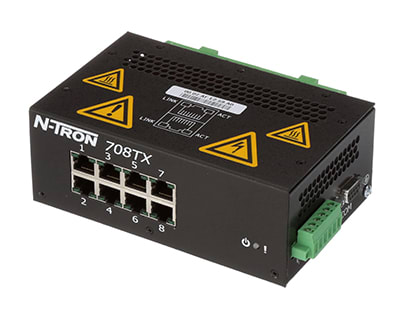
Key Considerations for Selecting Ethernet Switches
Within the overarching categories of unmanaged switches and managed switches are hundreds to thousands of different Ethernet switches with widely varying specifications. Addressing these key considerations can ease the specification process and help you select an Ethernet switch sure to satisfy your unique network needs.
- What type of power do you have access to? For example, will the switch plug into a wall outlet or use Power over Ethernet (PoE)?In some cases, implementing a managed switch will require additional power that may be beyond the availability of the network.
- How many devices do you currently have in your network and how many do you intend to have? Managed and unmanaged switches are both available with a variety of port counts.
- What is the length of your network? Standard Ethernet cables max out at 100 meters, but switches designed for PoE, PoE+, and 5G can drive data up to approximately 400 meters.
- Is a human administrator available to set up and maintain a managed network? Some businesses simply don’t have the staff available to take full advantage of a managed switch, and if you can’t leverage their enhanced functionality, you probably can’t justify the added cost.
- How much data are you sending and receiving over your network? Managed and unmanaged switches are available with traditional copper ports and fiber optic ports, the latter of which can transfer much more data far more quickly over longer distances.
- Budget. Due to their added functionality and future-proof capabilities, managed switches tend to cost more than unmanaged switches.
Navigating the Switch Market With RS
It’s no secret that the market for managed and unmanaged switches alike can appear intimidating, and especially when faced with nearly 2,000 different options from leading Ethernet switch manufacturers including Phoenix Contact, Red Lion Controls, Advantech and Moxa.
“The product portfolios of just these four manufacturers are all but sure to include a network switch that satisfies your unique needs, ranging from the most basic to the most advanced requirements,” said Guess. “Each offers products with different port configurations, data transfer capabilities and security features at varying price points. As the price increases, the technologies within the switch — including increased security, increased data transfer rates and upgraded ports and connectors — tend to become more advanced. Some higher priced switches also have connectors that are specific to fiber-only networks to ensure that the switch can provide maximum power ratings and data rates. I like to compare switches to cars. If you want to go fast, you’ll want the supercar, but if you’re just looking for something for Sunday drives, buy the Camry.”
RS is also proud to offer a selection of unmanaged switches through its private label RS Pro by RS, which delivers a suite of rigorously tested, economically priced products that comply with all relevant internal standards and are backed by the RS Pro Seal of Approval, which is only awarded after a meticulous quality control process based on stringent international standards. RS Pro by RS unmanaged Ethernet switches come in both come in both five- and eight-port configurations, are capable of speeds ranging from 10/100 Mb/s to 1000 Mb/s and feature dual power outputs ranging from 5–30 VDC with reverse polarity protection, which enables the devices to run even on a standard car battery.
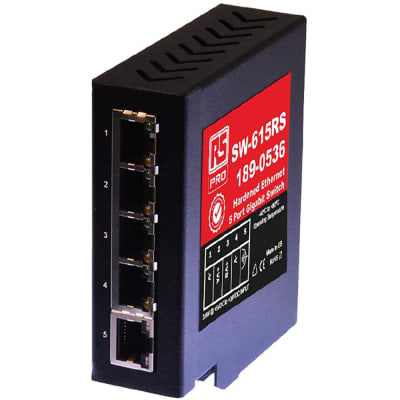
The RS Difference
Selection is not the only benefit of purchasing through RS. As part of our mission to be a proactive, omnichannel, satisfaction-obsessed solution for industrial automation customers, we are proud to offer customers the use of our Virtual Demo Lab. Designed to demonstrate how products will fit and operate within a customer’s specific industrial automation application, RS’s Virtual Demo Lab helps customers select the best possible solutions for their systems, as well as identify and proactively solve potential problems before they commit more time or resources or open themselves up to financial risk.
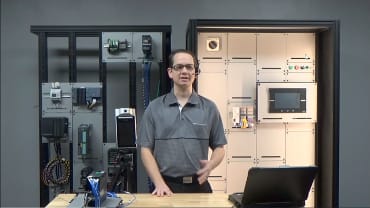
“The Lab is a fantastic comparison tool,” said Guess. “For example, if you’re an end-user trying to decide between a managed Ethernet switch from Red Lion and Phoenix Contact, we can load those products into a virtual representation of your network — built using the specifications you provide — to show you how they will fit and operate in your system in a live demonstration that’s accessible online from anywhere.”
Requesting a demo is easy. All a customer has to do is request a demo and their representative will quickly begin facilitating the process while remaining a critical touchpoint throughout.
An Exciting Future That Poses Risk
No two customer situations are exactly alike, and no network connectivity solution is going to be one-size-fits-all. However, regardless of the form the solution takes, the goal remains the same: to create a secure, efficient network that aligns with the goals of the customer. With this in mind, it is also important for customers to realize that these goals may change as technology evolves and the business landscape shifts beneath their feet. These types of changes present limitless opportunities, but for those who neglect to account for or take advantage of them, they can also mean getting left behind.
This mindset should be adopted on every level of business, up to and including the structure of an Ethernet network. “In the next three years, Industry 4.0 is going to dramatically change industry on a fundamental level,” said Guess. “We have only just begun to tap the potential of artificial intelligence, and as we speak the number of satellites is ever-increasing to ultimately create a mesh for connectivity. That’s crazy to me! In this environment, I believe all businesses should be operating with a future-proof mindset. And although they may be small devices with a relatively simple purpose, Ethernet switches capable of handling what an interconnected dataverse can produce are as good a place as any to start the future-proofing process.”
Additional Information
RS offers more than 3.5 million products from over 650 trusted suppliers, including many of the world’s most well-respected Ethernet switch suppliers, and is committed to transforming customer feedback into faster, more informative and more intuitive website features designed to improve the convenience, simplicity and speed of doing business anytime, anywhere and on any device. RS also offers a comprehensive suite of services and tools including a highly experienced technical support team, kitting, bagging and labeling services and a BOM tool, as well as an online registration page featuring helpful information and how-to guides including a Quick Start Guide, a guide to Advanced Features and an FAQ.
For more information about RS’s extensive portfolio of managed and unmanaged Ethernet switches, please visit the links embedded throughout this article. For assistance identifying and deploying industrial connectivity solutions optimized for your unique application, please contact your local RS representative at 1.866.433.5722 or reach out to the technical support team.
